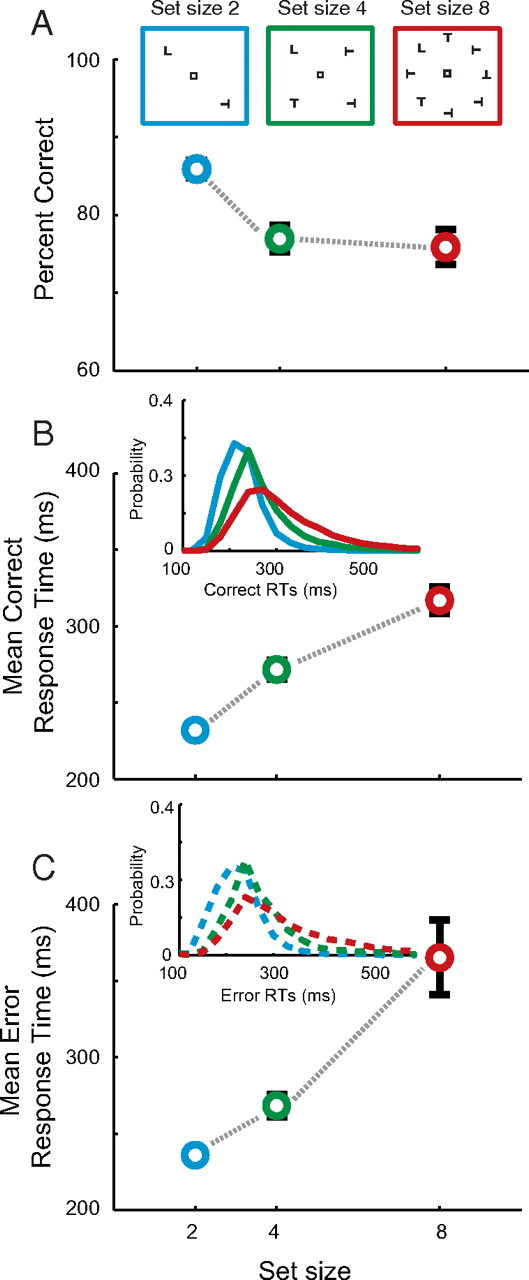Figure 1.

Visual search task and behavior. After fixating for a variable delay, an array of stimuli was presented, one of which (L) was the target and the rest (T) were distractors of random 90° orientations. Monkeys were required to make a single saccade to the target for reward. When the array contained two objects, they were always presented at opposite locations. When the array contained four items, each was separated by an unfilled location. All stimuli were presented at 10° eccentricity. Target identity varied across sessions. Set size varied randomly across trials. A–C, Mean ± SE percentage correct (A), correct (B), and error (C) response times for set size 2 (blue), 4 (green), and 8 (red). Insets show search array illustration (A), correct (B), and error (C) response time distributions. Data are pooled across subjects. See Figure 5 for individual subject data.
